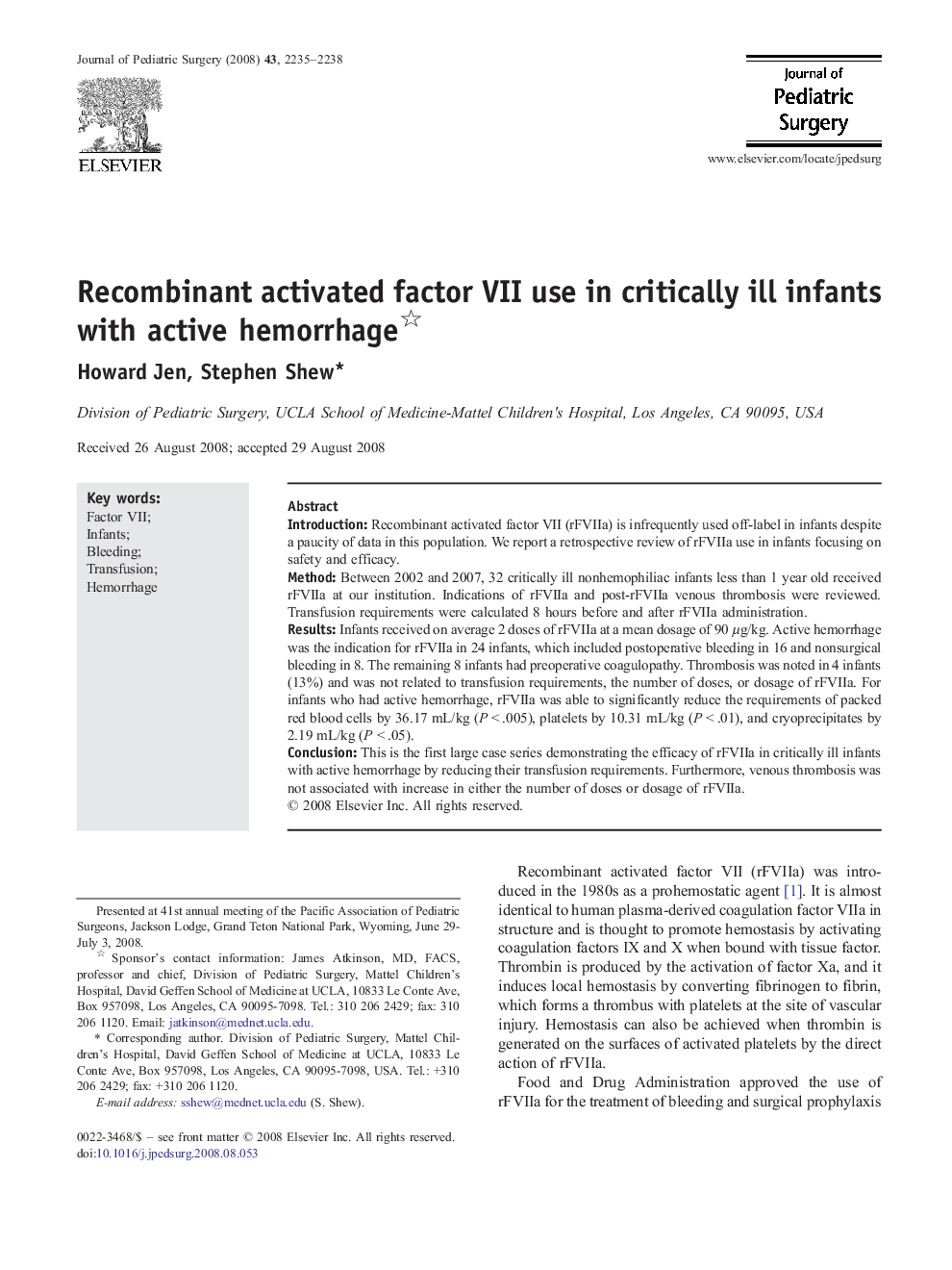| Article ID | Journal | Published Year | Pages | File Type |
|---|---|---|---|---|
| 4158093 | Journal of Pediatric Surgery | 2008 | 4 Pages |
IntroductionRecombinant activated factor VII (rFVIIa) is infrequently used off-label in infants despite a paucity of data in this population. We report a retrospective review of rFVIIa use in infants focusing on safety and efficacy.MethodBetween 2002 and 2007, 32 critically ill nonhemophiliac infants less than 1 year old received rFVIIa at our institution. Indications of rFVIIa and post-rFVIIa venous thrombosis were reviewed. Transfusion requirements were calculated 8 hours before and after rFVIIa administration.ResultsInfants received on average 2 doses of rFVIIa at a mean dosage of 90 μg/kg. Active hemorrhage was the indication for rFVIIa in 24 infants, which included postoperative bleeding in 16 and nonsurgical bleeding in 8. The remaining 8 infants had preoperative coagulopathy. Thrombosis was noted in 4 infants (13%) and was not related to transfusion requirements, the number of doses, or dosage of rFVIIa. For infants who had active hemorrhage, rFVIIa was able to significantly reduce the requirements of packed red blood cells by 36.17 mL/kg (P < .005), platelets by 10.31 mL/kg (P < .01), and cryoprecipitates by 2.19 mL/kg (P < .05).ConclusionThis is the first large case series demonstrating the efficacy of rFVIIa in critically ill infants with active hemorrhage by reducing their transfusion requirements. Furthermore, venous thrombosis was not associated with increase in either the number of doses or dosage of rFVIIa.
